 As I reported yesterday, IBM has announced a new "I.T.Standards Policy," calling for (among other things) more transparency, openness and inclusiveness in the standards development process, and for the use by standards organizations of fewer, clearer and more open-source friendly intellectual property rights policies. IBM also disclosed the wide-ranging, and in some cases radical, recommendations offered by 70 standards experts from around the world. These recommendations are intended to raise the bar in standards development.
As I reported yesterday, IBM has announced a new "I.T.Standards Policy," calling for (among other things) more transparency, openness and inclusiveness in the standards development process, and for the use by standards organizations of fewer, clearer and more open-source friendly intellectual property rights policies. IBM also disclosed the wide-ranging, and in some cases radical, recommendations offered by 70 standards experts from around the world. These recommendations are intended to raise the bar in standards development.
Rather predictably, it was one particular aspect of the IBM announcement that drew the most interest - and headlines. The result was a host of stories with titles like IBM May Quit Technology Standards Bodies (Wall Street Journal), IBM Treatens to Leave Standards Bodies (the New York Times) and, to the same point but more entertainingly, IBM Takes a Blunt Axe to its Dealings with Standards-Setters (Financial Times). Clearly, when IBM threatens, people listen. Still, as I observed yesterday,
While IBM's standards activities are formidible, IBM still controls only one vote within any single standards organization. As a result, it will be significant to see whether it is successful in inspiring other companies (and particularly those that were its allies in the ODF-OOXML competition, such as Google and Oracle) to make statements of active support for these same principles.
I'm pleased to say that such words of support are starting to be offered, beginning with this statement of support from the Linux Foundation:
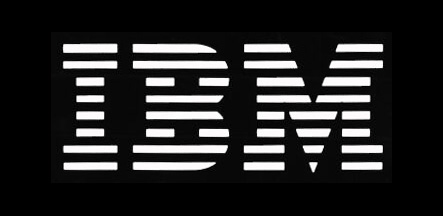 Although most of the thunder of the OOXML adoption battle has now died away, the after effects of that controversial process continue to linger. Some of the residual effects have been intangible, such as hard feelings on the part of at least four National Bodies over their inability to obtain a formal review of their complaints over how the OOXML adoption process was conducted. But there have been other responses that are more concrete, and directed at taking specific actions to raise the bar and avoid a repeat performance. One of those efforts has been ongoing since late last spring, and today the first tangible results of that effort are being made public.
Although most of the thunder of the OOXML adoption battle has now died away, the after effects of that controversial process continue to linger. Some of the residual effects have been intangible, such as hard feelings on the part of at least four National Bodies over their inability to obtain a formal review of their complaints over how the OOXML adoption process was conducted. But there have been other responses that are more concrete, and directed at taking specific actions to raise the bar and avoid a repeat performance. One of those efforts has been ongoing since late last spring, and today the first tangible results of that effort are being made public.
The process in question was a Wiki-based conversation conducted over a six week period last May and June, involving over 70 government, academic, industry, policy and standards body thought leaders from around the world. And the public parts include the release of the results of that conversation, and the announcement by IBM of a new "I.T. Standards Policy" that will regulate its participation in standards development. That policy is based upon the principles developed in the course of that virtual global conversation. These announcements are the beginning, but not the end, of a dialogue. The next step will be an invitation-only event at Yale University in November that could give rise, among other possibilities, to a new global organization to rate standards development organizations for qualities such as openness and transparency.
 The latest blowback from the OOXML adoption process emerged last Friday in Brasilia, Brazil. This newest challenge to the continued relevance of ISO and IEC was thrown when major IT agencies of six nations - Brazil, Cuba, Ecuador, Paraguay, South Africa and Venezuela - signed a declaration that deploring the refusal of ISO and IEC to further review the appeals submitted by the National Bodies of four nations. Those nations were Brazil, India, South Africa and Venezuela, and the statement is titled the CONSEGI 2008 Declaration, after the conference at which it was delivered. The Declaration notes, "That these concerns were not properly addressed in the form of a conciliation panel reflects poorly on the integrity of these international standards development institutions," and concludes, "Whereas in the past it has been assumed that an ISO/IEC standard should automatically be considered for use within government, clearly this position no longer stands."
The latest blowback from the OOXML adoption process emerged last Friday in Brasilia, Brazil. This newest challenge to the continued relevance of ISO and IEC was thrown when major IT agencies of six nations - Brazil, Cuba, Ecuador, Paraguay, South Africa and Venezuela - signed a declaration that deploring the refusal of ISO and IEC to further review the appeals submitted by the National Bodies of four nations. Those nations were Brazil, India, South Africa and Venezuela, and the statement is titled the CONSEGI 2008 Declaration, after the conference at which it was delivered. The Declaration notes, "That these concerns were not properly addressed in the form of a conciliation panel reflects poorly on the integrity of these international standards development institutions," and concludes, "Whereas in the past it has been assumed that an ISO/IEC standard should automatically be considered for use within government, clearly this position no longer stands."
The decision to make the statement flows in part from the fact that the National Bodies of each of the four countries that had filed appeals have decided that it would be fruitless to further press their formal protests. This has left government IT agencies with no choice but to reconsider what, if anything, the adoption of a standard by ISO/IEC JTC 1 should mean to them when they make standards-based decisions. The statement indicates that ISO and IEC have underestimated the possible consequences of not taking the appeals more seriously, and states in part:
This is one of a very occasional series of non-tech essays that I call The Monday Witness. This series focuses on social rather than technical issues, for the reasons explained in the first entry in the series. As always, the opinions expressed here are mine alone.
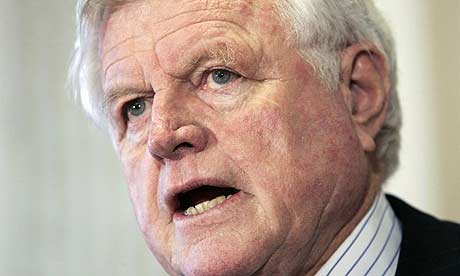 For those of us who are of a certain age, the 1960s were an era not to have been missed. Indeed, they were a time when idealism seemed to be a responsibility of citizenship, rather than an idle pursuit. As John Kennedy, Robert Kennedy and Martin Luther King spoke out in words that captured the heart as well as the mind, more and more fell in behind. Their goals and ideals demanded to be your goals and ideals, and all of the lofty aims they espoused seemed to be as achievable as they were morally imperative.
For those of us who are of a certain age, the 1960s were an era not to have been missed. Indeed, they were a time when idealism seemed to be a responsibility of citizenship, rather than an idle pursuit. As John Kennedy, Robert Kennedy and Martin Luther King spoke out in words that captured the heart as well as the mind, more and more fell in behind. Their goals and ideals demanded to be your goals and ideals, and all of the lofty aims they espoused seemed to be as achievable as they were morally imperative.
And then, of course, the house of cards began to tumble in, through a succession of events that everyone that lived through them remembers all too well - not just remembers, but remembers frozen and captured in the amber of a terrible series of still images - where you were, and what you were doing. And then, after what seemed an endless moment, the numbing horror of what came next, as if the camera had begun rolling once again.
 As I reported yesterday, the OOXML appeals brought by Brazil, India, South Africa and Venezuela have been rejected by the Technical Management Board (TMB) and Standardization Management Board (SMB) of ISO and IEC, respectively. I have now received the actual voting results for the IEC vote, and an indecipherable screenshot of the ISO votes. I'll hope to add the ISO votes later on when I get more comprehensible information, but in the meantime, here are the IEC results.
As I reported yesterday, the OOXML appeals brought by Brazil, India, South Africa and Venezuela have been rejected by the Technical Management Board (TMB) and Standardization Management Board (SMB) of ISO and IEC, respectively. I have now received the actual voting results for the IEC vote, and an indecipherable screenshot of the ISO votes. I'll hope to add the ISO votes later on when I get more comprehensible information, but in the meantime, here are the IEC results.
In each case, the questions included in the ballot were the same:
a) Not to process the appeal any further
b) To process one or more of the appeals, which would require setting up of a conciliation panel
For each appeal, a board member could vote "yes," "no" or "abstain," with only the yes and no votes counting for purposes of determining whether or not the vote would pass, and a two-thirds vote being required for passage (the "Conclusion" at the end of the voting results cites clause 10.4, Rules of Procedure, as the reference for these rules).
Update: For the appeal by appeal details of the IEC Board vote, see this blog entry.
 ISO and IEC have announced the rejection of the four appeals submitted by the National Bodies of Brazil, India, South Africa and Venezuela. The rejection follows on the heels of July 9th recommendation of the Secretaries General of each of the two standards organizations to their respective management boards not to give the appeals further consideration.
ISO and IEC have announced the rejection of the four appeals submitted by the National Bodies of Brazil, India, South Africa and Venezuela. The rejection follows on the heels of July 9th recommendation of the Secretaries General of each of the two standards organizations to their respective management boards not to give the appeals further consideration.
Under the ISO rules of process, this now paves the way for the as-adopted version of OOXML, now called IS0/IEC DIS 29500, Information technology - Office Open XML, to proceed to publication. That version is substantially different than the current implementation of OOXML in Office 2007, and its text has still not been publicly released by ISO/IEC. According to a joint press release, "this is expected to take place within the next few weeks on completion of final processing of the document." Intriguingly, the press release goes on to say, "and subject to no further appeals against the decision."
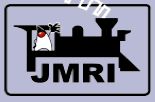 Today those who believe in free content and free and open source software won a major victory in court, as reported by Larry Lessig, Mark Radcliffe, and Pamela Jones, among others. The underlying facts, and the legal counsel involved, were hardly major figures on the commercial landscape: the open source software at issue - the JAVA Model Railroad Interface - had been developed by the plaintiff, Robert Jacobsen, for model train buffs under an infrequently used free and open source license, and the attorney representing the plaintiff - a solo practicioner in Maryland - was young and inexperienced. But as often happens, a small case between small parties can have huge implications. And decisions that may make good strategic sense to the parties can also have disastrous consequences for those that are not in the same situation.
The case in question is called Jacobsen v. Katzer, and you can read the opinion here (a brief summary of the facts and proceedings to date is here). It's been going on for quite awhile, and a lot of people have spent a lot of time behind the scenes helping make sure that it came out the right way. That said, it hasn't received a lot of attention outside of FOSS legal circles, so for those of you who haven't heard of it before, I'll try to distill briefly why this decision is so important, and why people are so pleased with today's decision.
Today those who believe in free content and free and open source software won a major victory in court, as reported by Larry Lessig, Mark Radcliffe, and Pamela Jones, among others. The underlying facts, and the legal counsel involved, were hardly major figures on the commercial landscape: the open source software at issue - the JAVA Model Railroad Interface - had been developed by the plaintiff, Robert Jacobsen, for model train buffs under an infrequently used free and open source license, and the attorney representing the plaintiff - a solo practicioner in Maryland - was young and inexperienced. But as often happens, a small case between small parties can have huge implications. And decisions that may make good strategic sense to the parties can also have disastrous consequences for those that are not in the same situation.
The case in question is called Jacobsen v. Katzer, and you can read the opinion here (a brief summary of the facts and proceedings to date is here). It's been going on for quite awhile, and a lot of people have spent a lot of time behind the scenes helping make sure that it came out the right way. That said, it hasn't received a lot of attention outside of FOSS legal circles, so for those of you who haven't heard of it before, I'll try to distill briefly why this decision is so important, and why people are so pleased with today's decision.
 The latest edition of Linux World ground to a halt in San Francisco today. I made it into town just last night for a VIP party hosted by the Linux Foundation, where I caught up with lots of true believer friends (developers, journalists and corporate supporters), and for the Board meeting today. I never made it to this year's show, though, opting instead to arrive early only to head back out of town for a few days of hiking in the hills south of town.
The latest edition of Linux World ground to a halt in San Francisco today. I made it into town just last night for a VIP party hosted by the Linux Foundation, where I caught up with lots of true believer friends (developers, journalists and corporate supporters), and for the Board meeting today. I never made it to this year's show, though, opting instead to arrive early only to head back out of town for a few days of hiking in the hills south of town.
Or at least, that was the plan. But as it happened, the best I could manage was a few hiking escapes sandwiched between inconveniently scheduled conference calls, thrashing out some IPR issues holding up the formation of an interesting and unusual consortium I'll look forward to writing about post-launch. The LF board meeting today was productive, though (a highlight was a walk around the Linux Developers Network Site we brought live today, as well as the new Linux Application Checkerkiller development tool. that Steven J. Vaughn-Nichols immediately pronounced "make ISVs and other programmers start to love developing for Linux."
But to return to the show: some things never change, it's true, but some of those things that never change do so in ways that are fresher than others. Linux World, for example, was Linux World, or so I heard from all that attended. I tried to scan the agenda, and on a fast connection it took forever to load, what with all the dynamic content and fancy graphics. This year, it seemed, people felt let down, as if the show wasn't delivering the action any more, but just, well, droned on.
But on my way back from the Board dinner, and across the street from where I was staying (Hotel Nikko - full stereo in the room, and a New York Times waiting outside the door every morning - how civilized is that?), I was reassured to find that at least the alfresco, evergreen street scene of San Francisco remains reliably mutable and alive.
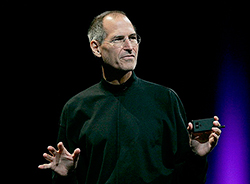 Ever since Steve Jobs addressed the adoring crowds at this year's Apple Worldwide Developers Conference, the press, Apple fans - and most especially, Apple investors - have been concerned over the state of his health. The reasons are obvious: Five years ago, Jobs announced that he had been diagnosed, and cured, of a rare and happily less pernicious form of pancreatic cancer (the more common variety is almost never discovered before it has become incurable). And, when Jobs took the stage this June, he was far thinner and more haggard than he had ever looked before.
Ever since Steve Jobs addressed the adoring crowds at this year's Apple Worldwide Developers Conference, the press, Apple fans - and most especially, Apple investors - have been concerned over the state of his health. The reasons are obvious: Five years ago, Jobs announced that he had been diagnosed, and cured, of a rare and happily less pernicious form of pancreatic cancer (the more common variety is almost never discovered before it has become incurable). And, when Jobs took the stage this June, he was far thinner and more haggard than he had ever looked before.
Since then, although rumors have swirled, Apple has refused to state whether or not Jobs has had a recurrence of his cancer - or disclose any meaningful details at all. Even on calls with securities analysts, Apple's response has only been that "Steve's health is a private matter."
Thus you might think that if you were a journalist, and you got a call from Steve Jobs yourself, giving you, and you only, the private scoop on the status of his health, you might feel like a pretty lucky guy, and take that news to the public within whatever constraints you had agreed to with the Apple CEO. Or would you write a different story entirely, and bury that news in the penultimate paragraph of a long story, and write at length instead about how stockholders were entitled to know the news that you had just buried?
With that lead in, you can guess which way New York Times business page columnist Joe Nocera called the coin toss. So here's the good news about Steve Jobs (up front), and the bad news about a Journalistic decision.
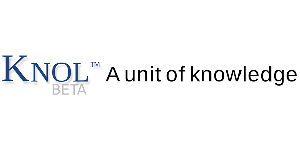
Back in December of last year, Google posted a brief announcement of a new experiment in online publishing. At first blush it seemed to represent a challenge to the Wikipedia - but with a few differences. Google summarized the concept as follows:
Earlier this week, we started inviting a selected group of people to try a new, free tool that we are calling "knol", which stands for a unit of knowledge. Our goal is to encourage people who know a particular subject to write an authoritative article about it. The tool is still in development and this is just the first phase of testing. For now, using it is by invitation only. But we wanted to share with everyone the basic premises and goals behind this project.
Then the project dropped out of sight, while the chosen authors contributed initial content, and while Google decided whether to green light the project for ongoing support and public participation
This Wednesday, Google lifted the password curtain on its infant knol site, and issued a new announcement. In some respects, the description of the knol game plan (and even the words) are identical to what we read in the original blog entry. In others, they are different, apparently reflecting lessons learned and author feedback received during the intervening seven months. And, of course, there is now the nascent site itself to browse and watch evolve as well.
What you'll see when you visit turns out to be quite different from the Wikipedia - at least for now. Given that until yesterday it was neither available to public feedback nor open to volunteer authors desiring to launch their own knols, what it looks like today will almost certainly be very different from what it looks like a year from now, or perhaps even in month from now. With the door now open to anyone that wants to walk in and the freedom to go in any direction - not to mention ad revenues to be reaped and shared with authors - what we will see will be akin to the Apple App Store for the everyman and woman - not just for developers, but for anyone who can type.
Here's my take on what to expect, how the knol experiment may evolve, and why I think it matters - a lot.
 As I reported yesterday, IBM has announced a new "I.T.Standards Policy," calling for (among other things) more transparency, openness and inclusiveness in the standards development process, and for the use by standards organizations of fewer, clearer and more open-source friendly intellectual property rights policies. IBM also disclosed the wide-ranging, and in some cases radical, recommendations offered by 70 standards experts from around the world. These recommendations are intended to raise the bar in standards development.
As I reported yesterday, IBM has announced a new "I.T.Standards Policy," calling for (among other things) more transparency, openness and inclusiveness in the standards development process, and for the use by standards organizations of fewer, clearer and more open-source friendly intellectual property rights policies. IBM also disclosed the wide-ranging, and in some cases radical, recommendations offered by 70 standards experts from around the world. These recommendations are intended to raise the bar in standards development. Although most of the thunder of the OOXML adoption battle has now died away, the after effects of that controversial process continue to linger. Some of the residual effects have been intangible, such as hard feelings on the part of at least four National Bodies over their inability to obtain a formal review of their complaints over how the OOXML adoption process was conducted. But there have been other responses that are more concrete, and directed at taking specific actions to raise the bar and avoid a repeat performance. One of those efforts has been ongoing since late last spring, and today the first tangible results of that effort are being made public.
Although most of the thunder of the OOXML adoption battle has now died away, the after effects of that controversial process continue to linger. Some of the residual effects have been intangible, such as hard feelings on the part of at least four National Bodies over their inability to obtain a formal review of their complaints over how the OOXML adoption process was conducted. But there have been other responses that are more concrete, and directed at taking specific actions to raise the bar and avoid a repeat performance. One of those efforts has been ongoing since late last spring, and today the first tangible results of that effort are being made public. The latest blowback from the OOXML adoption process emerged last Friday in Brasilia, Brazil. This newest challenge to the continued relevance of ISO and IEC was thrown when major IT agencies of six nations - Brazil, Cuba, Ecuador, Paraguay, South Africa and Venezuela - signed a declaration that deploring the refusal of ISO and IEC to further review the appeals submitted by the National Bodies of four nations. Those nations were Brazil, India, South Africa and Venezuela, and the statement is titled the CONSEGI 2008 Declaration, after the conference at which it was delivered. The Declaration notes, "That these concerns were not properly addressed in the form of a conciliation panel reflects poorly on the integrity of these international standards development institutions," and concludes, "Whereas in the past it has been assumed that an ISO/IEC standard should automatically be considered for use within government, clearly this position no longer stands."
The latest blowback from the OOXML adoption process emerged last Friday in Brasilia, Brazil. This newest challenge to the continued relevance of ISO and IEC was thrown when major IT agencies of six nations - Brazil, Cuba, Ecuador, Paraguay, South Africa and Venezuela - signed a declaration that deploring the refusal of ISO and IEC to further review the appeals submitted by the National Bodies of four nations. Those nations were Brazil, India, South Africa and Venezuela, and the statement is titled the CONSEGI 2008 Declaration, after the conference at which it was delivered. The Declaration notes, "That these concerns were not properly addressed in the form of a conciliation panel reflects poorly on the integrity of these international standards development institutions," and concludes, "Whereas in the past it has been assumed that an ISO/IEC standard should automatically be considered for use within government, clearly this position no longer stands." For those of us who are of a certain age, the 1960s were an era not to have been missed. Indeed, they were a time when idealism seemed to be a responsibility of citizenship, rather than an idle pursuit. As John Kennedy, Robert Kennedy and Martin Luther King spoke out in words that captured the heart as well as the mind, more and more fell in behind. Their goals and ideals demanded to be your goals and ideals, and all of the lofty aims they espoused seemed to be as achievable as they were morally imperative.
For those of us who are of a certain age, the 1960s were an era not to have been missed. Indeed, they were a time when idealism seemed to be a responsibility of citizenship, rather than an idle pursuit. As John Kennedy, Robert Kennedy and Martin Luther King spoke out in words that captured the heart as well as the mind, more and more fell in behind. Their goals and ideals demanded to be your goals and ideals, and all of the lofty aims they espoused seemed to be as achievable as they were morally imperative. As I reported
As I reported  ISO and IEC have announced the rejection of the four appeals submitted by the National Bodies of
ISO and IEC have announced the rejection of the four appeals submitted by the National Bodies of 
 The latest edition of Linux World ground to a halt in San Francisco today. I made it into town just last night for a VIP party hosted by the Linux Foundation, where I caught up with lots of true believer friends (developers, journalists and corporate supporters), and for the Board meeting today. I never made it to this year's show, though, opting instead to arrive early only to head back out of town for a few days of hiking in the hills south of town.
The latest edition of Linux World ground to a halt in San Francisco today. I made it into town just last night for a VIP party hosted by the Linux Foundation, where I caught up with lots of true believer friends (developers, journalists and corporate supporters), and for the Board meeting today. I never made it to this year's show, though, opting instead to arrive early only to head back out of town for a few days of hiking in the hills south of town.
